On Assignment in Antarctica with Google Ocean
July 3, 2013
By Mission Blue Young Explorer, Yoland Bosiger
There’s no traffic, no factories, no fast food dispenser and no bright flashy movie theaters to tantalize and entertain. Here under the starry sky there is nothing but stillness – a crisp, clear environment, both clean and uncontaminated. Yet if you strain your ears hard enough you might just hear it. Far off in the distance a glacier is giving rise to new life – a freshly carved iceberg begins its journey adrift. 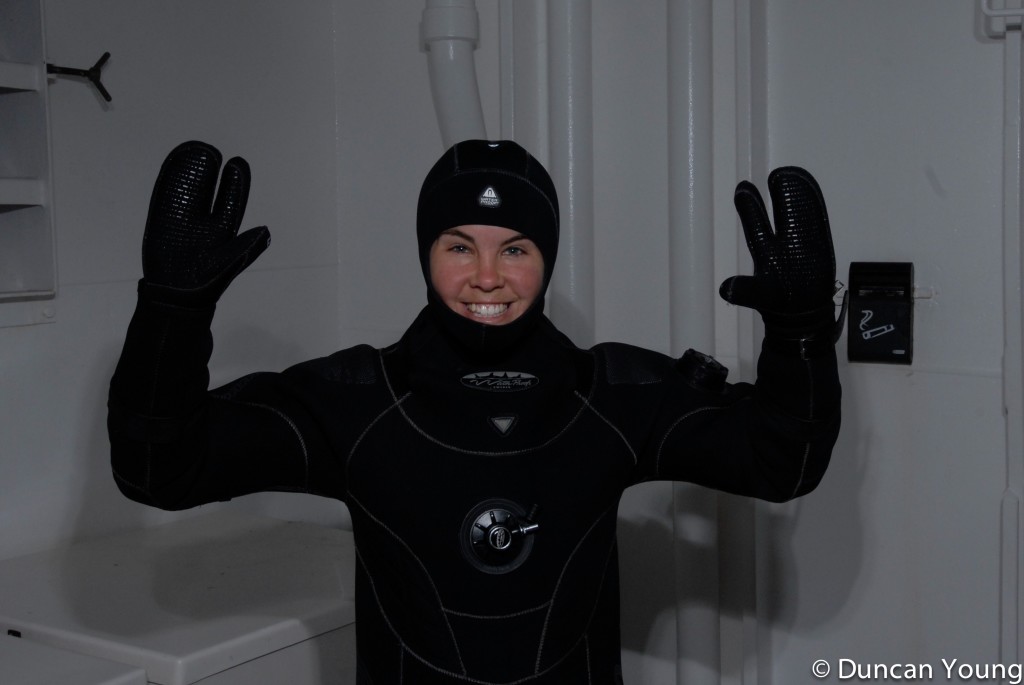
- Photo (c) Duncan Young
Antarctica is like no other place on this planet. It’s here that the driest desert and the coldest temperatures combine to produce an inhospitable landscape, a windswept frontier of untamed wilderness. Yet compared with Antarctica’s relative desolation, the southern ocean teems with life. In fact without the ocean, few of the Antarctic’s majestic animals inhabitants could be witnessed at all.
Roughly 30 million years ago, the Southern Ocean isolated Antarctica from the rest of the world. The ocean shapes Antarctica’s unique and fragile ecosystem from the blooms of phytoplankton and tiny krill, right up to the seabirds, penguins, seals and whales that are synonymous with this perpetually frozen frontier. Even the continent resembles a marine animal: a giant stingray with its tail lying towards South America and its head swimming into the Indian Ocean.
Google Earth allows you to explore this stingray-like continent with a click of a mouse. Using thousands of stitched satellite images, Google Earth creates impressions of our world that would have staggered early polar explorers like Robert Scott, Roald Amundsen, Ernest Shackleton and Douglas Mawson. But the earth covers only a meager 39% of our planet. The other 71% is ocean – a blue space so vast that it could fit the entire continent of Asia eight times. For many, the ocean of Antarctica is about as foreign as the surface of the moon. Even for those familiar with the ocean, few have penetrated the depths of the far southern seas.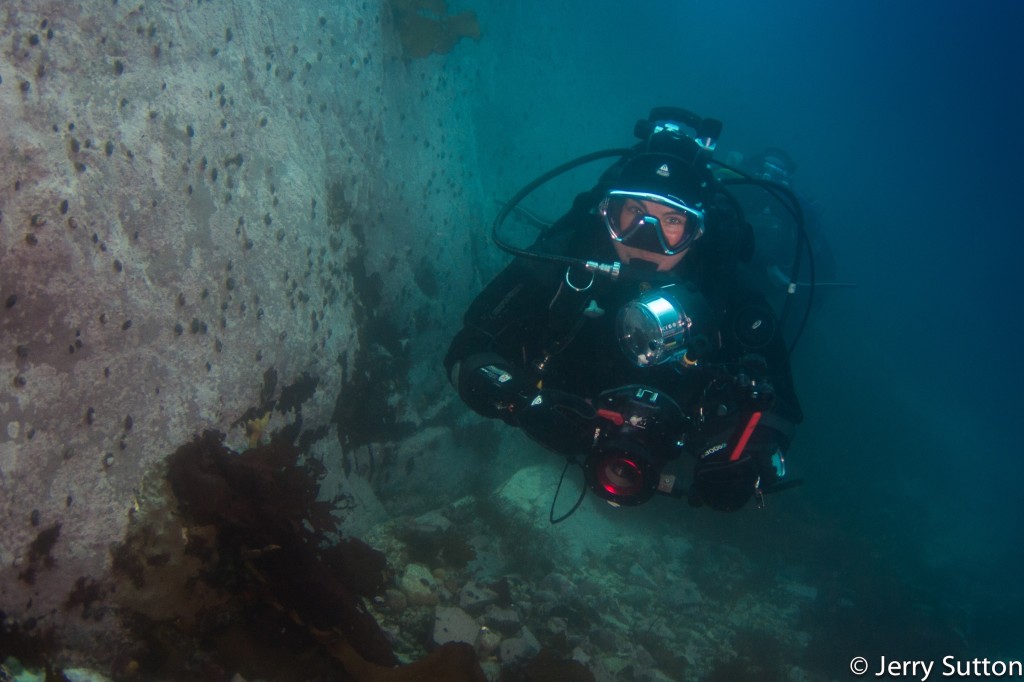
- (c) Jerry Sutton
Giving people the opportunity to visit the ocean in cyberspace was a revolutionary idea, arising out of Dr. Sylvia Earle’s ‘wish’ for influential organizations and individuals to make an effort to protect the planet’s life support system – the oceans. Cruising through the Ocean layer allows you to take a visual journey below the surface of the ocean and view the depths and shapes of the underwater terrain.
If you go to Antarctica on Google Ocean you can learn about Antarctica’s Ross Sea with John Weller, home to Mission Blue’s Ross Sea Hope Spot, or access information from the Census of Marine Life.
With no Google Ocean Submarine equivalent of the Google Car (not yet anyway), the ocean layer relies on the contribution of scientists, divers and conservations to document its vast expanses. As a 2012 Our World Underwater Scholarship Society Rolex Scholar, I was given the opportunity to help Kelvin Murray, a contributor to Google Ocean through Silvertip Expedition and Diving Management. My journey would take me south to Antarctica with Oceanwide Expeditions where I would photograph the ocean and contribute content to the Google Ocean layer.
Exploring Antarctica with Google Ocean from Yoland Bosiger on Vimeo.
There would be no quick-and-easy plane flight to bear us to Antarctica – instead the M/V Plancius would reveal this remote wilderness to us gradually; firstly with the crossing of the circumpolar current (an area of great upwelling and accumulation of wildlife) and then with the sightings of our first icebergs. Finally, after two days at the mercy of world’s most tremulous seas, a panorama of snow capped peaks and glaciers opened up in front of us. Penguins were porpoising next to the ship and a whale breached in the distance causing camera snapping pandemonium on the deck.
Like the early explorations of Ernest Shackleton and Douglas Mawson, diving in Antarctica is still largely a mission into the unknown. Ice is not a stagnant. It moves, pops, fizzes, flips over and can be seriously dangerous if you don’t have your wits about you. For this reason trained dive guides as well as your own polar training is critical to an enjoyable and safe dive in Antarctica.
So how do you go about diving from an 89m vessel like the M/V Plancius? Surely back-rolling 3m from the ship’s gangway would not be an ideal entry! Instead Oceanwide Expeditions uses a much more sensible method – small zodiacs which take divers straight to their diving locations. On the day of my first dive, the diving area was a flurry of activity with everyone helping each other out to get their equipment organized. Once at the site, we reviewed the procedures for free flowing regulators, did our buddy checks and prepared mentally for the agony that was about to befall our bare skin.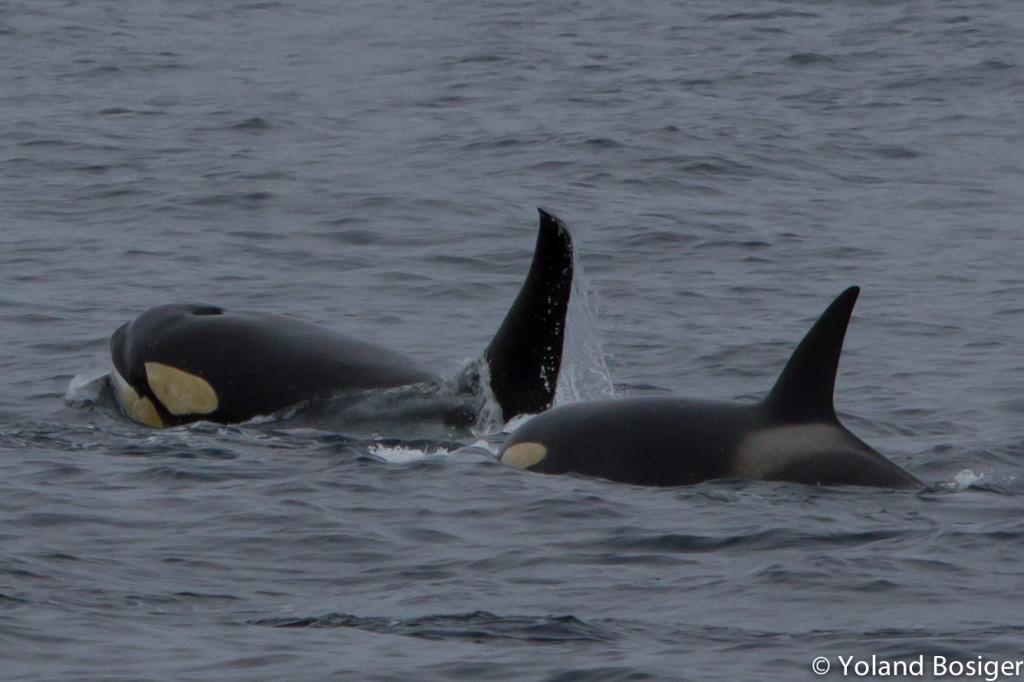
- (c) Yoland Bosiger
Camera in hand, I fined my way down into the frigid blue melt water. Compared to white snow above, Antarctica underwater revealed a kaleidoscope of colour and life that I couldn’t wait to photograph – if I could only get my Michelin-lady fingers to move the camera buttons… While it would be nice to be thought of as some kind of up and coming Michael Aw, I have to admit that I’m still a beginner when it comes to underwater photography. In fact when the sound of penguins zipping past me caught my attention, I could not have been less ready. Instead I just sat there, completely gobsmacked at the graceful underwater transformation of these otherwise slightly ungainly birds.
Over the next four days we dove several times, along shallow seabeds, deep walls and around icebergs. We were lucky enough to witness a great diversity of colourful invertebrate life including sponges, sea stars, nudibranches, proboscis worms and Antarctic isopods the size of your outstretched hand, an example of gigantism that is common in Antarctic waters. Iceberg diving was sensational, so different from anything I had ever been exposed to and immensely beautiful. Underwater, icebergs resemble giant corrugated golf balls which reflect and bend the light from above. Giant vertical corrugations indicate where expanding air has carved tracks of fast passage to the surface.
With the weather gods still smiling on us, the decision was made to attempt to cross the polar circle at a latitude of 66° 33′ 44″ S. The year 2013 marks 240 years since Captain James Cook first crossed this invisible line. In fact he crossed three times without actually even seeing the continent – now that does seem like a lot of work for not much return! But as divers we were more excited about the prospect of diving a tiny speck just south of the Polar Circle called Detaille Island. This was the first time divers from Oceanwide Expeditions had dived at Detaille and so it was a spectacular opportunity to get new photos and document a largely unexplored underwater habitat. Stunning urchins, starfish and tunicates brightened the rocky surface just outside the bounds of the harbor areas and as we continued along the wall a large rockcod was waiting for us. Many of these animals are highly adapted to live in the Antarctic conditions and are found nowhere else on earth. 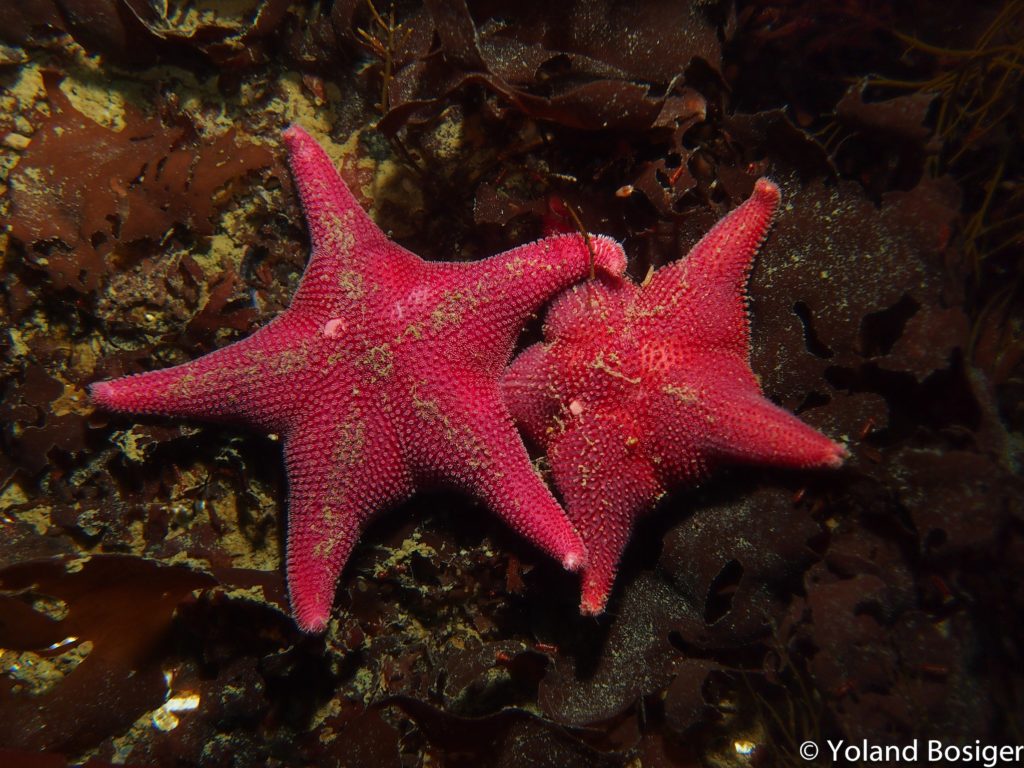
- (c) Yoland Bosiger
On our way north, Kelvin and the crew spotted the distinctive black and white markings and tall dorsal fins of a pod of orcas hunting. Like wild dogs of the Kalahari, these magnificently powerful and intelligent animals use teamwork to overcome their prey, in this case an incredibly rare Arnoux’s beaked whale. Known to dive over 1000 m, the Arnoux’s beaked whale is so seldom seen on the surface that they remain largely a mystery to science.
Harsh climate and isolation has meant that Antarctica has escaped some of the destruction that has occurred in much of the rest of the world. In Antarctica, predators like orcas and leopards seals still dominate the ecosystem and many animals remain completely unafraid of people. But even icy cold weather, deep fiords and gnarly glaciers have not kept humans away completely. In fact human beings have a terrible track record when it comes to some species of whale and seal in Antarctica, driving many groups of these mammals close to extinction. In response to these atrocities, the countries of the world signed the Antarctic treaty and pledged to protect Antarctica for the purpose of peace and science in 1958.
While subsequent protocols have underscored the protection of Antarctica’s land mass, more needs to be done to protect Antarctica’s Southern Ocean – the fundamental driver of Antarctica’s unique and fragile ecosystem. The Southern Ocean remains a hunting ground for commercial fisherman chasing krill and long-lived toothfish. Unfortunately toothfish are so lucrative that they attract a strong illegal, unreported and unregulated constituent using long lines and deepwater gillnets – both highly destructive fishing techniques. Krill fishing, which began in 1973, is thought to increase in the next decade due to growing demand for omega-3 oils for heath supplements and aquaculture. This is incredibly concerning considering the importance of krill as the powerhouses of the entire Antarctic food chain (for more information see: http://antarcticocean.org/whats-at-stake/).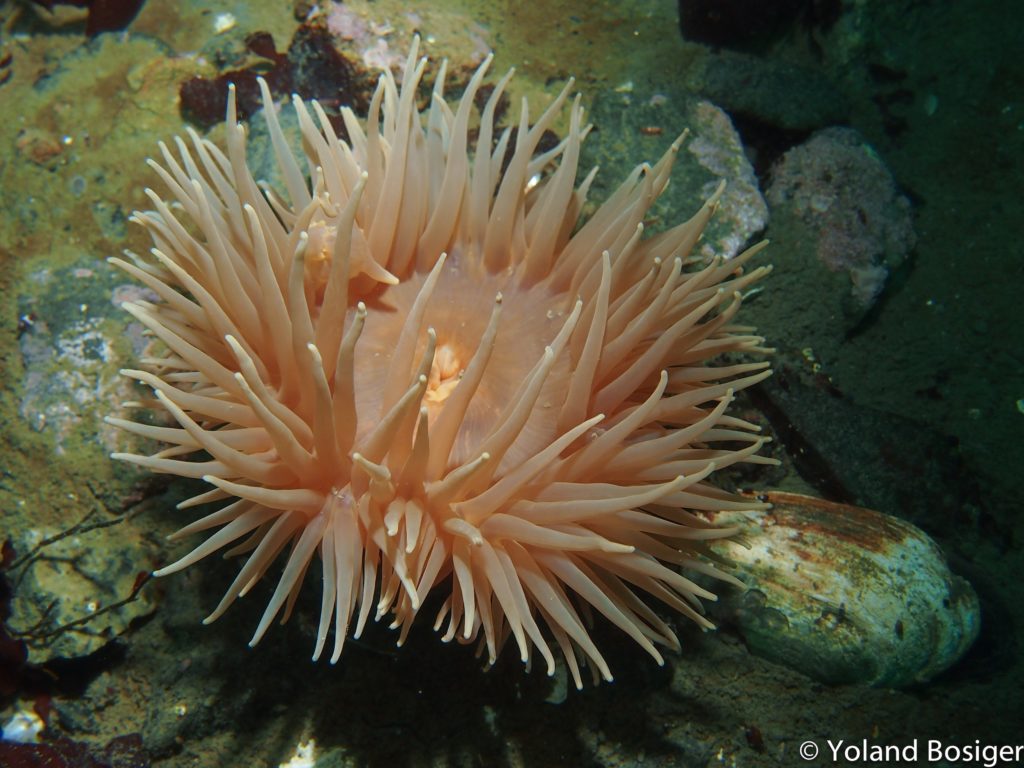
- (c) Yoland Bosiger
There has never been a more important time to learn more about Antarctica and give support to the creation of marine protected areas, a tried and tested marine conservation strategy that if enforced, can protect important species and buffer the effects of climate change that are having an unprecedented effect on the polar regions. It’s quite astonishing to think that this frozen finger of land, the Antarctic Peninsula, has warmed on average 2.5° C in the last 50 years (10 x that of the rest of the planet).
At a special meeting in Germany in July, the Commission for the Conservation of Antarctic Marine Living Resources (CCAMLR) will gather to decide the fate of some of Antarctica’s most pristine marine ecosystems. Mission Blue and its partner the Antarctic Ocean’s Alliance is pushing for eight large reserves to be placed in representative areas around Antarctica. The first two reserves to be considered in Germany are the Ross Sea and the East Antarctic. Go here to sign the petition: http://antarcticocean.org/
As I look through folder after folder of pictures to submit to Google Ocean, I feel an enormous sense of privilege to have been able to see this place with my own eyes. Yet while I sit here in Cambridge England, approximately 9000 miles (14000km) away it strikes me that Antarctica is in fact affecting me right now. Antarctica’s Southern Ocean is responsible for pushing all the currents around the world and hence if this ocean changes dramatically so indeed will our lives.
All over the world, Antarctica is sparking the imagination and igniting a spirit of adventure and fascination in nature unlike any other continent on the planet. Kids looking at pictures of Antarctica are drawn into its breathtaking scenery and are reminded that there is more to life then department stores and video games. Life is meant for living, for dreaming and for discovering. It’s for tasting and touching, for challenge and daring. Life is short and I believe that it is in the wild places that we are truly alive. Lets make sure that Antarctica’s ocean remains an inspiration for many generations to come.
Special thanks to Oceanwide Expeditions, Silvertip Expedition and Diving Management, and the Our World Underwater Scholarship Society for making my trip to Antarctica possible.








Touching, informative with a touch of sense of humor. Thank you for being one of those spoke persons for the future generations.
Gillnets rank beside bottom trawling and salmon farms as among the greatest threats to sustainable seas. The U.S. ought to have the sense to ban them, since fisherman won’t take this sensible step themselves. The only place these nets have a place is, perhaps, at terminal salmon fisheries (where artificially raised salmon return to the pen nets where they were raised). They need to be off main-stem rivers and out of the oceans. Thanks for the article.